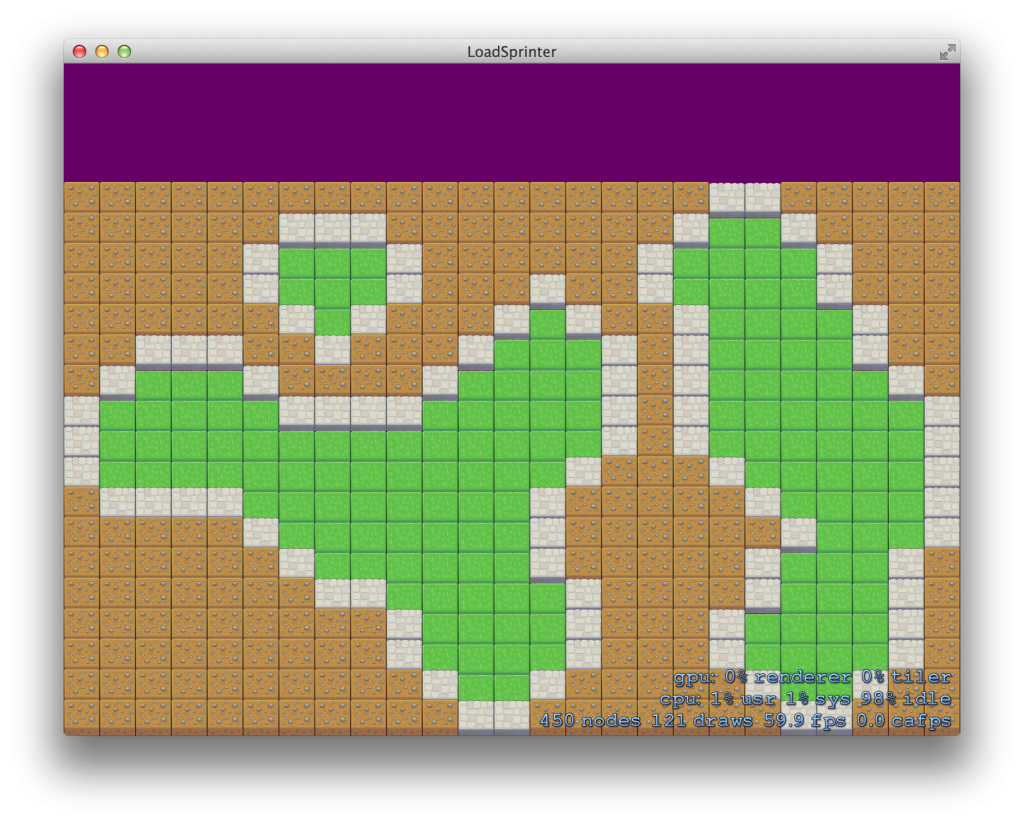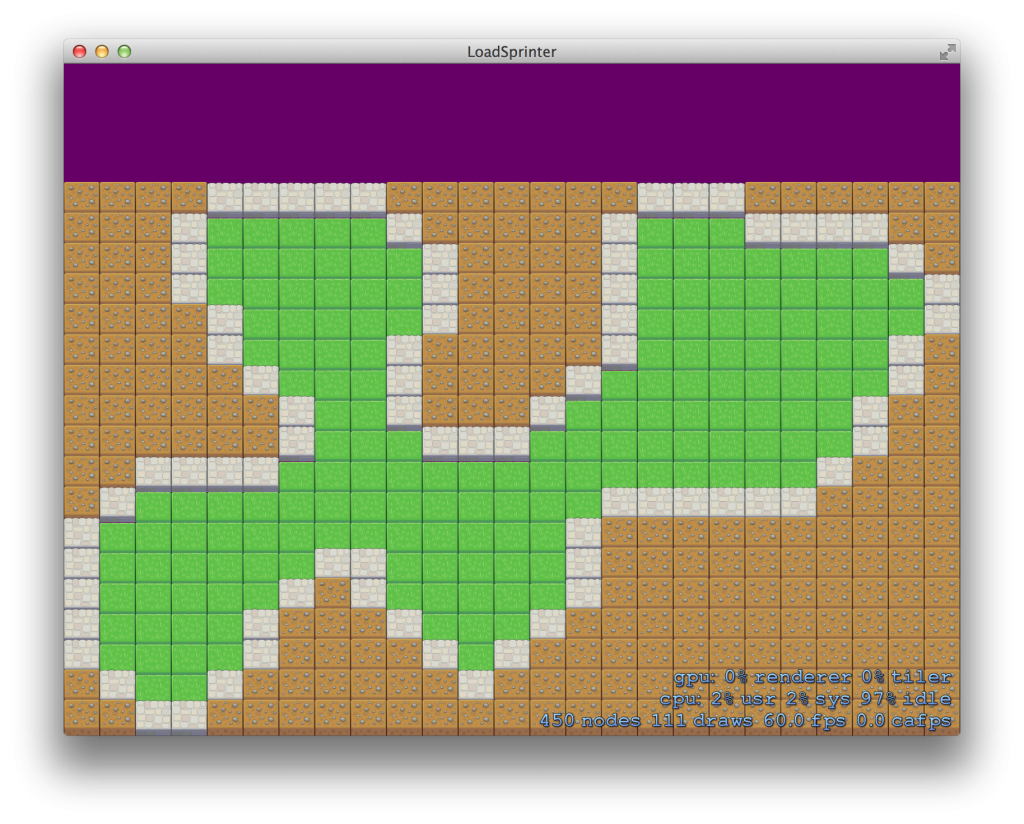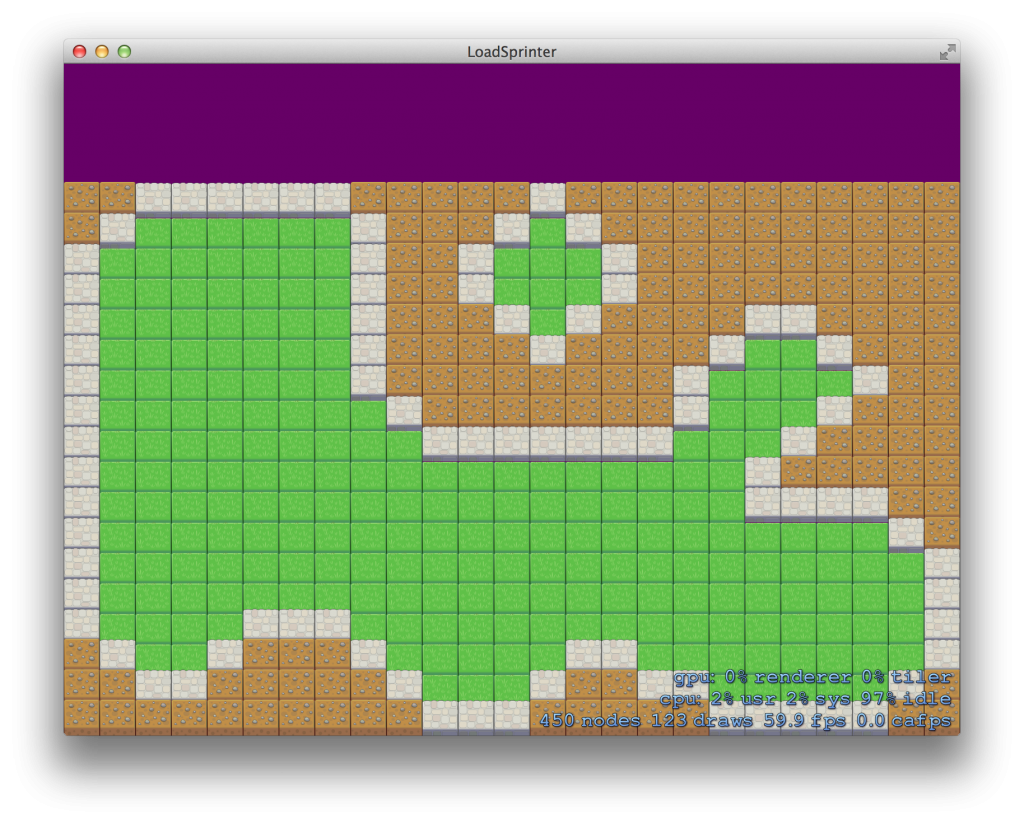Just a quick update here. Added a player to move around the map (he can move sideways and 1 block up as necessary), and he can shoot the ground either down-left or down-right. No fancy animations or anything yet, just playing around with it in my random cave generator. It already brought back memories of planing out how far you’d have to dig out to get to another space in Lode Runner. Although no threats yet to make it interesting. That might be my next plan, is to at least maybe have some random patrolling creatures or two.
I also discovered that you can’t update the image of a SpriteNode in SpriteKit on the fly, you have to remove it and add a new one. I believe you can apply animations to cycle through images and such, but simply changing the image doesn’t work. Â You can change the Texture Atlas and coordinates though I think, but I haven’t yet set those up.
First Movement Demo
Note: I’m just posting these updates on the fly. If I spend too long on them I’ll probably get bored and give up, so apologies in advance for grammatical errors!
Figured I’d keep a mini blog going on a project I’m working on (because it’s worked so well before) to do a game inspired by Lode Runner: The Legend Returns (later, Lode Runner Online), and reposting it on iDevGames.com. I really liked the no direct-combat style of Lode Runner for planning and running around a level and gathering loot, and I’d like to bring a faster level of twitch gameplay to the old school mechanics, as well as a smaller field of view (rather than exposing the entire map to the player) and maybe play around with ideas of lighting/physics to the game. As you can probably tell, I’ve played a decent amount of the new Spelunky lately, and it’s inspired me to make a similar game.
My first step this week was to mess around with a random level generator. I’m using SpriteKit (technically a KoboldKit wrapper around it, not sure what advantages KoboldKit has for me just yet. http://koboldkit.com).
I started with Big Bad Waffle’s http://bigbadwofl.me/random-cave-generator, because it required no prep work. I just implemented it in Objective-C (using Objective-C NSMutableArrays, probably not the best for performance reasons so that will probably switch to pure C later). It created some pretty good (importantly: re-producible) results based on a seed value I initially drew it using SKSpriteNodes of different colors, but then figured I’d steal the ever-useful Cute sprites available to make a quick map and off it went! I did a little shift in the y direction to make the ground appear a little bit lower just for fun visual effect.
Note: Images used are just for a more interesting rendering of the map, not a decision on style.



I’ve also been reading into how Spelunky does their code generation and it’s pretty interesting. Apparently a simple variety of the Drunken Walk algorithm (or something along those lines). More details here from a guy who ported Spelunky to the web and posted his findings. It’s great to create a guaranteed procedural path to an exit. It required a little more setup as you need “rooms” with exits on different sides (and a decent assortment of them as well) in order to get going, but it looks pretty simple and I might give it a try later!
Next up: Making a player able to walk around and blow up walls! Still deciding on top-down, angle, or side view for this game.
I found this post in my drafts folder. I’m not sure I ever reached a consensus in my own thoughts on this, but I figure I’ll post it anyway.
I was reading this article linked on reddit from IGN called Playing Games for all the Wrong Reasons by Justin Davis, and the author states that the times in his life where he played videogames the most are times of high stress or difficulty in his life, where he needed to achieve/be successful at something and used video games to do that. Then he questions whether or not this is healthy and whether people use video games to hide from their fear of failure.
I’m not entirely sure I agree with the direction he was trying to take with the article. Videogames, like many other media, are a form of escapism. I know that personally during finals in High School and College I would often end up watching episode after episode of a TV Show on Netflix that I had never cared about before, or reading a couple books I had been meaning to get to, or play some videogames. Everything that wasn’t studying for classes was suddenly extremely interesting! Now was I trying to achieve success with these activities? I don’t think so.
My goal was simple: escape. I was tired of studying, mentally and physically. I needed a break so I would do something that allowed me to relax my brain. Games act the same way. If your life is causing you stress, yes you could spend all day worrying about it, but sometimes you need a break, to refresh, to recharge. The same thing applies to programming, if you can’t figure out a problem, take a break, relax, come back to it fresh. Videogames are just one way of doing that. Do you get feedback in games? Definitely. Is it so bad to leave everything behind? I don’t think so. Now whether or not you can stop yourself from playing to get back to your original problem is something that’s entirely up to you, whether you escape by playing games, reading, or other things entirely.
The more I’m writing this post, the more I seem to be agreeing with the author. I guess my main point is I don’t feel like it’s a negative thing to escape your worries for a while. Going on a hike or a vacation are not seen as negative things to do to escape, and video games allow you to do that even if you can’t take time off.


